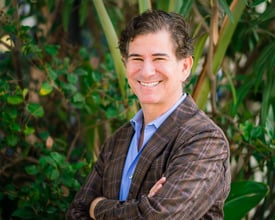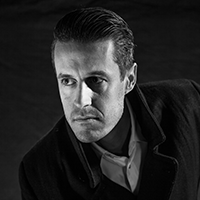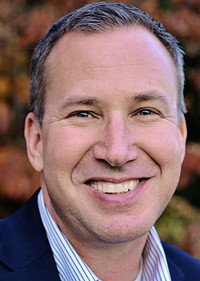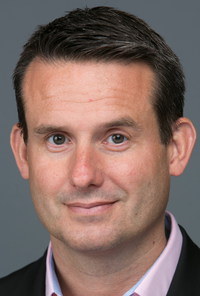Amidst Change is a Constant: Life is Still Two-Way
 Social media. Wherever you go, you see and hear about it.
Social media. Wherever you go, you see and hear about it.
But it was not that way 20 years ago. In fact, 20 years ago, it did not even exist. If you were transported back two decades to 1994 and described today’s world to a group of people, they would have said that you were crazy.
Who could have imagined a technology available on various platforms that enables people to engage online with others about products, services, programs, and issues of mutual interest and concern?
Let us step back from the current frenzy of a now crowded digital ecosystem, reflect a bit, and try to gain some perspective on the evolution of social media and common challenges. You will see that each of us has the means to use social media effectively, and that, ironically, a key constant is central to dealing with the change.
My interest in the subject began nearly 20 years ago when, as an advertising and communications professional, I visited Scotland to participate in a university distance learning program. The Internet was used to reach students situated in far off places of the world. The program was ahead of its time, and today’s online education classes contain many of the same features. From that point on, I, like many others, became fascinated with how Internet technology could be used in mass communications. The world was changing.
This year marks several milestones. Notably, 15 years ago, a group of big thinkers published in 1999 a set of essays online that asserted that the Internet was unlike the traditional media used in one-way mass marketing since it enabled individuals to have "human-to-human" interactions that were two-way. The collection of essays was known as "The Cluetrain Manifesto," and it suggested that businesses and other organizations needed to fundamentally change its traditional practices to survive in a networked marketplace. The manifesto enlightened me and many others on how a socially networked world would alter the future of business and community.
Some people embraced the change, but many resisted it. Yet, programs, applications, and platforms increased on the Internet. Facebook was created in 2004, for instance, and this year marks its ten year anniversary. Several years after Facebook, Twitter was founded, and other platforms followed. Individuals were interacting more online. More people embraced blogging, including me.
Early adopters banded together to support each other. For example, in August 2006, I was fortunate to attend in Palo Alto the inaugural meeting of the Social Media Club. We founding members of the umbrella club bonded and formed friendships. The meeting inspired me to return home and found a chapter in Los Angeles, whose signature mix of entertainment, technology, and culture makes it an epicenter in the ongoing evolution of the Internet. Others likewise established club chapters across the United States. The social media army of users and promoters was growing, and it has continued in recent years at an accelerated pace, especially with the advent of mobile devices.
Social media has come a long way, and yet it has not -- a paradox. There are current and future challenges.
Let’s face it, despite being omnipresent, many people still find social media hard to understand, confusing, and overwhelming. Many people wonder:
- What is social media and how can it make a difference in my business and organization?
- How might I be using it ineffectively and how can I learn to use it prudently with a high return on investment?
- How can I find the time to manage the massive amounts of online information and still engage consistently with my customers, audiences, and stakeholders?
The fundamental question is no longer should you be doing social media, but are you doing it right. There are ways to discern this. To do it right, you need to have a healthy attitude toward your audience, time, money/resources, and skill in using the technology.
A healthy attitude means that you don’t just push content out to others in a one-way fashion (i.e., excessive selling). It means that you value each member of your audience and consistently engage in two-way, long-term, mutually beneficial conversations (i.e., respectful sharing). This means you have to give them proper attention and post new content regularly. This requires a good amount of time and labor, which requires money and resources.
Social media skills are also required. You will either need to possess them or employ others that do. The technology is definitely learnable to the average person who has the motivation, time, and energy. Learning options include workshops, webinars, classes, personal coaches, books, and just doing it by trial-and-error. You can also pursue the option of employing consultants and service vendors to monitor, manage, and measure your social media activities.
Social media has its challenges, yet we must keep perspective. From the use of distance learning in Scotland that I saw nearly 20 years ago, to the publication of the prescient "The Cluetrain Manifesto" 15 years ago, to the founding of Facebook ten years ago -- and so much more -- we see some of the sweep of the last two decades.
Social media is here to stay. It is not a fad. In order to function and prosper in today’s world, you need to understand it and utilize it. You have the capacity to do so. For amidst the multiple challenges of change, social media is still based on fundamental interpersonal skills that we developed from childhood into adulthood -- only now expressed through a new technological medium. It is indeed ironic that the pivotal item for the change is a constant.
In your daily life, remember that the key message to stay forever focused on to succeed supremely with social media is this: Life is still two-way.
Sally Falkow is the founder and president of Meritus Media, a digital public relations and social media agency based in the Los Angeles-area. She is the author of the book, "SMART News: How to Write and Distribute News Content in the Digital Age" (August 2014). An abridged version of this socalTECH essay previously ran in the Pasadena Star-News.
 Tony Greenberg
Tony Greenberg
 Ivan Nikkhoo, Managing Partner – Navigate Ventures
Ivan Nikkhoo, Managing Partner – Navigate Ventures Michael Sherman, Neil Elan and Karine Akopchikyan
Michael Sherman, Neil Elan and Karine Akopchikyan Alejandro Guerrero
Alejandro Guerrero Eric Eide, Alliance for SoCal Innovation
Eric Eide, Alliance for SoCal Innovation Kevin DeBre
Kevin DeBre Braven Greenelsh
Braven Greenelsh Rob Freelen, Los Angeles Market Manager, Silicon Valley Bank
Rob Freelen, Los Angeles Market Manager, Silicon Valley Bank Braven Greenelsh
Braven Greenelsh Kaäre Wagner, Silicon Valley Bank
Kaäre Wagner, Silicon Valley Bank Al Guerrero, Silicon Valley Bank
Al Guerrero, Silicon Valley Bank Rob Freelen, Los Angeles Market Manager, Silicon Valley Bank
Rob Freelen, Los Angeles Market Manager, Silicon Valley Bank Sid Mohasseb
Sid Mohasseb William Hsu
William Hsu Braven Greenelsh
Braven Greenelsh Dinesh Ravishanker
Dinesh Ravishanker Dina Lozosfky
Dina Lozosfky Melinda Moore
Melinda Moore Ivan Nikhoo
Ivan Nikhoo Jaspar Weir
Jaspar Weir Erik Caso
Erik Caso Tracy Olmstead Williams
Tracy Olmstead Williams Dave Berkus
Dave Berkus Bernard Luthi
Bernard Luthi Peter Cowen
Peter Cowen Nick Hedges
Nick Hedges Eric Larsen
Eric Larsen Michael Terpin
Michael Terpin Steve Reich
Steve Reich